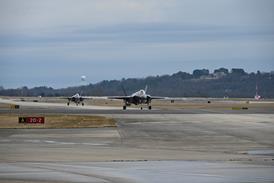Delta Air Lines plans to conduct evaluation flights later this year of a NASA-developed turbulence prediction and warning system (TPAWS), which may be able to offer up to a minute or more of warning time, writes Guy Norris.
Developed by a team led by Langley Research Center, Virginia, and including AeroTech Research and Rockwell Collins, TPAWS uses enhanced radar signal processing software to detect the motion of moisture in air that would otherwise appear to be clear. The software can be hosted in existing predictive Doppler windshear systems such as Rockwell Collins' WXR-2100 multiscan weather radar, making it relatively easy to retrofit for widespread use if the trial is successful, says NASA.
The TPAWS prototype will be flown on a Delta Boeing 737-800 beginning "this summer", says the agency. The system will be evaluated during nine months of regularly scheduled flights primarily from Atlanta to destinations in the USA and South America. The system has already been tested on NASA's Boeing 757 research aircraft that originally evaluated the software during a series of 13 "bad weather" flights in April and May 2002. TPAWS, which began in 2000 as part of the Aviation Safety Programme, is aimed at providing up to 2min warning time.
Although NASA says the modified radar software provides a cost-effective short-to-mid-term solution, longer-term work on alternative means of turbulence prediction continues in technology areas such as light detecting and ranging (lidar), and modified lightning detectors. The latter is a relatively recent area of research, since evidence has been found linking unstable electrical discharge and the presence of clear air turbulence.
Source: Flight International























